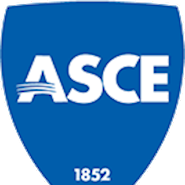For top paper
The Society has honored Madasamy Arockiasamy, Ph.D., P.Eng, F.ASCE, and Prakash A. Arvan with the 2023 Award for their paper “Behavior, Performance, and Evaluation of Prestressed Concrete/Steel Pipe/Steel H-Pile to Pile Cap Connections,” Practice Periodical on Structural Design and Construction, May 2022.
Better understanding of the connection between piles and pile caps/footings is needed so that future designs and design reviews can be adequately performed. This review paper presented discussions on the published experimental and analytical studies on prestressed concrete piles, steel H-piles, or steel pipe piles with cast-in-place (CIP) or precast footings, and/or pile cap connections with a focus on (1) pile embedment to achieve a fully fixed or pinned moment connection; (2) behavior of the pile embedment length when not treated by a special connection detail; and (3) reinforcement details to decrease the embedment length and develop fixity with a plain pile. The length of the pile embedment contributing to achieving a full fixity condition has a critical impact on substructure cost involving pile-to-pile cap (PTPC) connections. The design procedures involving piles subjected to lateral loading require a proper understanding of the fixity and ductility levels provided by the PTPC connections. Discussions on finite-element analyses (FEAs) were presented, including behavior predictions of the connections at both global and local levels. The study points to the need for modifications to the design of the PTPC connections in the existing standard codes/specifications.
For top book
The Society has honored Patrick Drogui; Rajeshwar D. Tyagi; Rao Y. Surampalli, Ph.D., P.E., BCEE, D.WRE, Dist.M.ASCE; Tian C. Zhang, Ph.D., P.E., D.WRE, Dist.M.ASCE; Song Yan; and Xiaolei Zhang with the 2023 Award for the book Electro-Coagulation and Electro-Oxidation in Water and Wastewater Treatment, published by ASCE, 2022.
The researchers provide current state-of-the-art fundamentals and applications of electro-coagulation (EC) and electro-oxidation (EO) for water/wastewater treatment. EC and EO are based on the principle of introducing an electrical current to induce chemical reactions in the system, causing the destabilization of most pollutants (e.g., suspended particles, bacteria, viruses, dissolved materials, metals, hydrocarbons, and many organics). The relatively low energy consumption, absence of chemical utilization with the potential recovery and reuse of treated water, as well as total size flexibility for usage in both urban and rural areas, make EC and EO true green technologies for water/wastewater treatment. This edited book presents a detailed overview of the origins, principles, benefits, impacts, and applications of EC and EO processes. Topics include (1) General basics, origins, and principles of EC and EO processes; (2) Mathematical modeling of EC and EO; (3) Combinations of EC with other treatment or emerging technologies such as photo-assisted electrocoagulation, sono-electrocoagulation, electrocoagulation-fenton, electrocoagulation-electrooxidation, electrocoagulation peroxidation, and ozone-assisted electrocoagulation processes; (4) Combinations of EO with other treatment or emerging technologies such as sono-electrooxidation, electro-peroxidation, electro-peroxone, electro-fenton, electro-oxidation filtration, and coupling electro-oxidation and biofiltration processes; (5) Environmental applications of EC and EO processes; (6) Comparative studies among EC, adsorption, and chemical precipitation; (7) Comparative studies among EO and other oxidation processes; (8) Cost comparison of EC/EO processes with other clean-up technologies; and (9) Challenges and future perspectives of EC and EO processes.
The ASCE State-of-the-Art of Civil Engineering Award is presented to the individual, individuals, or committee that has prepared, for the benefit of the profession, the most outstanding paper which reviews and interprets state-of-the-art scientific and technical information.



